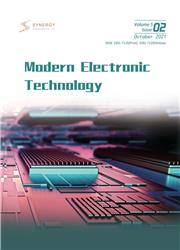Japanese-Chinese Machine Translation of Japanese Determiners Based on Templates
引用次数: 0
Abstract
The machine translation of Japanese sentences with determiners, like “shika...nai”, “tyoutto...dakedeha”, “tada...dake” and so on, are more special and regular on sentences structure. The research collects and classifies the Japanese sentences which contain the determiners. The classification is carried out by according to the characteristics of Japanese sentences and translation habit of Chinese sentences. Through further abstraction and simplification, translation templates are extracted by gathering grammar rules information, studying syntax and analysis the collocation mode of sentences. Those determiners express confirmed meaning, and the corresponding translation Chinese sentences have the same characteristic. By analyzing the sentence characteristics with determiners and formalizing the sentences structure, the translation templates are abstracted. By investigating the structure characteristic of original sentences with translation templates, the similarity algorithm was defined. The threshold value of the similarity calculation was obtained by preliminary experiments, and the experiments of Japanese-Chinese translation are carried out by a small corpus. The experimental results for several kinds of Japanese sentences with determiners show the translation accuracy rate is 68.6%, template coverage rate reach 83.3%. At last, through the analysis for the translation errors, following conclusion is drawn: the results of morphological analysis are erroneous, because the error of word segmentation the part of speech tagging also are erroneous, result in the grammar structure cannot match with templates; the original sentences are long and especially complex sentences; the templates are too complicated; the similarity calculation method needs to discuss further, and so on.基于模板的日语行列式的日中机器翻译
带有限定词的日语句子的机器翻译,如“shika…nai”、“tyoutto…dakedha”、“tada…dake”等,在句子结构上更具特殊性和规律性。本研究收集并分类了含有限定词的日语句子。根据日语句子的特点和汉语句子的翻译习惯进行分类。通过进一步的抽象和简化,收集语法规则信息,研究句法,分析句子的搭配方式,提取翻译模板。这些限定词表达了确定的意义,相应的翻译汉语句子也具有相同的特点。通过用限定词分析句子特征,并将句子结构形式化,抽象出翻译模板。通过研究翻译模板下原句的结构特点,定义了相似度算法。通过初步实验获得了相似度计算的阈值,并在一个小语料库中进行了日汉翻译实验。对几种带有限定词的日语句子的实验结果表明,其翻译准确率为68.6%,模板覆盖率达到83.3%。最后,通过对翻译错误的分析,得出以下结论:形态学分析的结果是错误的,因为分词和词性标注的错误也是错误的,导致语法结构与模板不匹配;原句是长句,尤其是复句;模板过于复杂;相似度的计算方法还有待进一步探讨。
本文章由计算机程序翻译,如有差异,请以英文原文为准。
求助全文
约1分钟内获得全文
求助全文

 求助内容:
求助内容: 应助结果提醒方式:
应助结果提醒方式:


